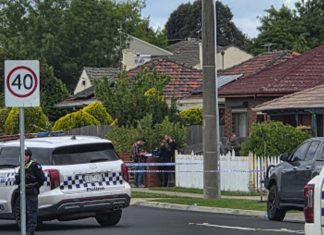PREVALENT disadvantage in Moe and Morwell has been linked to the “historical drag” of power industry privatisation in the region.
While residents commonly attribute the State Electricity Commission Victoria’s privatisation to subsequent high levels of unemployment in the Latrobe Valley, a former regional development leader said the lack of assistance to hardest hit towns was a “national and state disgrace”.
David Langmore, now retired but due to soon release a book on the history of planning and development in the Valley, worked in various senior regional development and strategic planning roles across Gippsland for many years.
He told The Express the stark difference in socio-economic profiles between Valley towns, particularly the much healthier profile of Traralgon as supported by recently released Australian Bureau of Statistics data, was evident “and we all know it” and “a lot of it is based on the rate and which the towns developed”.
Mr Langmore said prior to the SECV’s beginnings Traralgon was a slightly larger town than its counterparts but the post World War II “boom” had seen a “massive explosion of urban development in Moe and Morwell”.
“Both went through explosive growth at a rate of development which had not been seen in Victoria previously, other than in the gold rush period,” Mr Langmore said.
“Because of that extraordinary growth, a lot of it was done relatively quickly and was steered by the housing commission with big estates developed in Moe and Morwell.
“By comparison the rate of development in Traralgon happened at a relatively slower pace, off a relatively higher initial base so it experienced nothing like the growth trauma in Moe and Morwell.”
Mr Langmore said the privatisation of the SECV in the early 1990s saw Moe and Morwell “more heavily hit because a higher proportion of workers in those industries lived there” while many Traralgon workers were employed by the Australian Paper Mill.
Post-privatisation “some (former SECV employees) left the area, some remained but in lower paid jobs, some retired” and the net result was “much higher unemployment rates in Moe and Morwell”.
ABS data recently placed Morwell and Moe in the top 10 per cent of Australia’s most socio-economically disadvantaged towns, a scenario Mr Langmore attributed to “historical drag” on those towns, since Traralgon enjoyed a greater “range and breadth of non-power industry jobs”.
The cheaper residential accommodation available in Moe and Morwell had also “cut both ways”, Mr Langmore said.
“It is an advantage in that it is an attraction for some to come to the region, but for others it is the only place they have been able to get any housing,” he said.
Mr Langmore said the region faced a “long-term battle” in its efforts to diversify local economic development opportunities and “get a reasonable spread of those opportunities within the region”.
He said government assistance was required to encourage the redevelopment of older housing commission areas which were “in some cases quite well located but we need to facilitate further upgrading of the quality of the accommodation”.
“Quite frankly this area was not treated well when the power industry was downsized – it was given virtually no assistance whatsoever, it was a national and state disgrace and there is quite a bit of ground to make up… and I think the government owes it to us,” Mr Langmore said.
“That’s not to say (governments) can resolve everything, but I think both state and federal governments still have a debt of responsibility to the region.”











